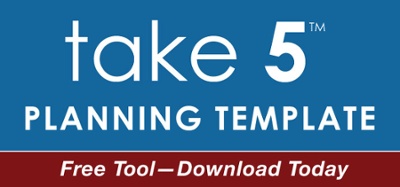June 10, 2019
Leaders: Stop the “Slide Shuffle” and “Overdone Outlines” for Your Next Presentation
Written by:
David Grossman

Attention leaders: Please stop what I call the “slide shuffle.” You have another presentation and you begin preparing by pulling slides together from various presentations you’ve given. If they worked before, they can work again, you think.
What’s often the result? Too many slides, slides that are too dense, a story that’s not cohesive, and little thought about what you want your audience to do, and where to purposefully interact with the audience.
Even the best presenters are missing an opportunity to shine because their slides take away from their polished style.
Or, you do the “overdone outline,” which consists of lists and lists of points to make. The outline beats the “slide shuffle” yet still ends up short of being an effective and efficient way to plan.
In the end, you think either technique might save you time, but it actually costs you more time and limits your ability to captivate an audience with a smart, strategic presentation that moves people to action.
Effective Presentations Begin with a Strategic Approach
Here’s a planning tool to help you be more planful and purposeful. It’s called “take 5” and includes the following steps:
- Outcome – What’s the business outcome you seek? Define it as specifically as you can.
- Audience – Are you communicating to an individual or group? What is your relationship? What perspective might they have on the topic and what information do they need? The more you know, the better you are able to influence the audience. In the end, what do you want them to do?
- Messages – Use the audience mindset above as a screen to determine your messages. Given what the audience thinks, and what you want them to do, how do you tell your story. List your story as if you were sharing it with a member of the audience.
- Method – In this case your method is a presentation. In what other ways might you need to share the message to reinforce its importance? Where will you purposefully create dialogue with the audience? How else will you intentionally build in interaction? Make sure to leave time for questions.
- Measurement – How will you evaluate how well your message is being received? One way is by analyzing questions employees ask—if they are looking forward and asking how a new situation might work, your message is getting through. If they are challenging your assumptions or want to take a step back, you could do a better job communicating.
Download our free tool, Take 5TM Planning Template, and start communicating even more effectively.
So, if you’re looking for a better way to create your next presentation – or any important communication for that matter – try “take 5.” Once you learn the methodology and approach it can literally take you 5 minutes to frame smartly your next presentation.
And say goodbye once and for all to the “slide shuffle” and “overdone outline.”
What important communication do you have where you can try “take 5”?
—David Grossman
Click below to download a free tool—Take 5™ Planning Template—to map out your communication, whether it's to one person, a group or an organization. Being more purposeful in your communications can take as little as five minutes.
Tag(s):
Leadership Communication
Other posts you might be interested in
View All Posts
Internal Communication
2 min read |
September 12, 2022
How to Reboot Your Communications Plan in Less Than a Day
Read More
Leadership
6 min read |
August 15, 2022
Why Leaders Are Operating in Silos Today and What to Do About It
Read More
Employee Engagement
6 min read |
November 3, 2021


Comments on this post